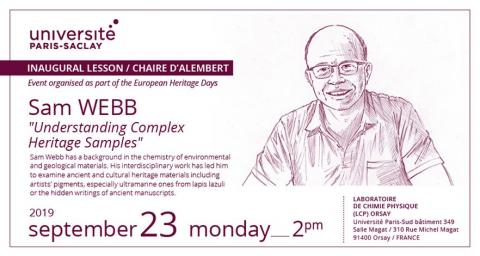
Invited professorship of Sam Webb (SSRL, Stanford, US)
Understanding Complex Heritage Samples - Welcome Ceremony, Jean d’Alembert Fellowship, Université Paris-Saclay
Event organized within the framework of the European Heritage Days 2019
Abstract
Synchrotron radiation-based x-ray techniques are increasingly used for spectroscopy and imaging of ancient and cultural heritage materials, in particular to produce macro-scale compositional and speciation images on entire samples, fossils or artworks since the x-ray excitation energy can be tuned to the optimal value for measurement. X-ray analysis of heritage materials at the Stanford Synchrotron and at Ipanema / Synchrotron SOLEIL has produced many important discoveries, from the determination of trace elements and colored pigments in dinosaur fossils to the deciphering of missing text in manuscripts and palimpsests, and the chemical changes that occur in paint pigments as they age. These measurements have all presented unique challenges for data collection and analysis and the development of a collaborative effort between these facilities has continued to strengthen analytical capabilities and create safer measurement conditions.
Short Biography
Sam Webb has a background in the chemistry of environmental and geological materials. His initial Ph.D. work on the chemistry of contaminants in the environment led to the development of a significant research program using x-ray fluorescence, x-ray spectroscopy, and x-ray diffraction to study a wide variety of chemistries in materials that cross many disciplines. This interdisciplinary work has led to his current research, focusing on examining ancient and cultural heritage materials including works on pigments, especially ultramarine ones from lapis lazuli or research on the hidden writings of ancient manuscripts.
More information [Lien manquant]
